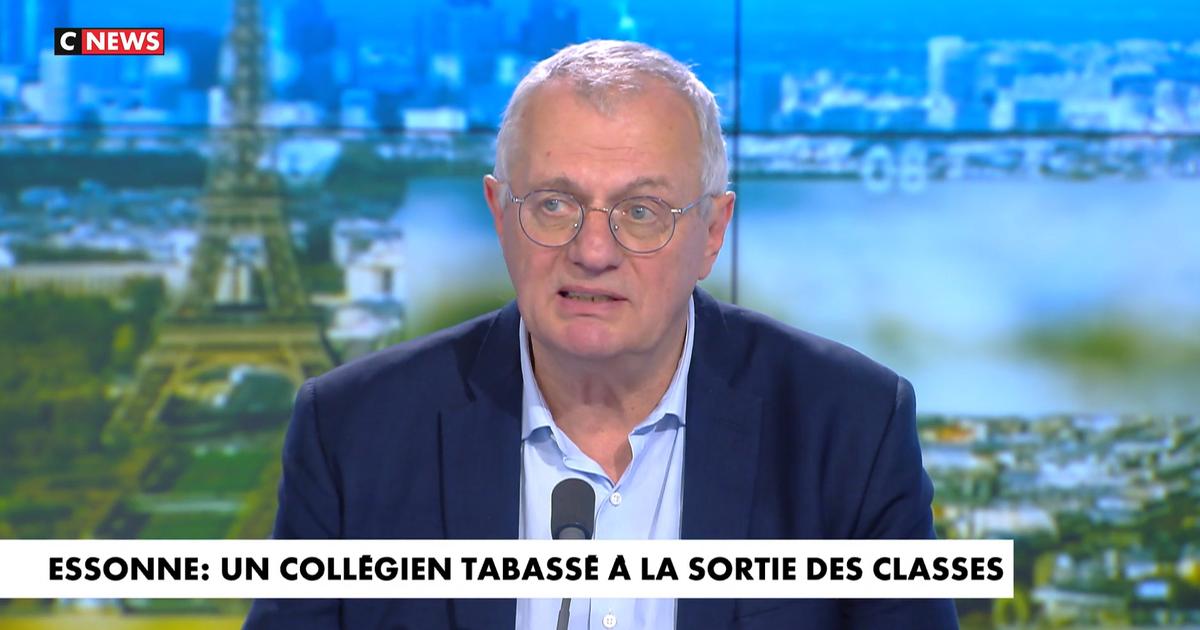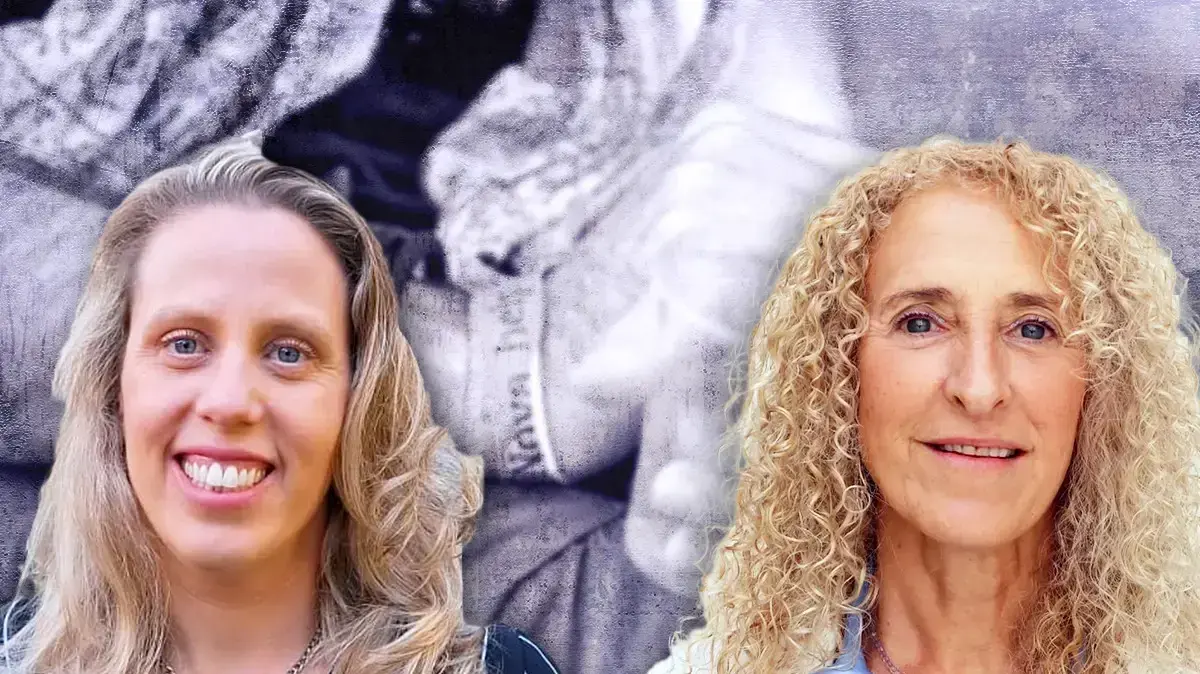When Renzo Piano; His wife, Magda Arduino, and their three children —Matteo, Carlo and Lia— returned to Italy from Paris, where the Genoese architect was designing the groundbreaking Pompidou Center (which opened in January 1977), they discovered not blue but green next to the Mediterranean. His ramshackle house in Genoa had a perpetually feral garden where they collected the neighborhood animals “that many times did not want to be adopted” —explains Lia Piano (Genoa, 1972) by Zoom— but that her mother found on the street. This is how they raised chickens. "Rather, we were invaded by them," he says. It happened when his father organized a contest among his children to design a chicken coop, and the chickens, who did not understand experiments with pulleys, ended up entering the house. In the eighties,the Piano lived in an Eden that contrasted with the school, where they did not get to adapt.
The writer Lia Piano working at her home in Genoa.Alessandro Grassini
Recently, Magda, Lia's mother - who divorced the architect in 1989 - decided to sell that house.
“It was too big, it was too much work,” explains Lia.
“My brothers, like so many men, are experts at sneaking around.
So it was my turn to help ”.
It was rewarded: the memories revived.
Then the urge to write a novel appeared.
“It is a rescue exercise.
When reading it, my mother - who is exactly like the mother of the novel;
that is, a friend of improvising and changing her mind— she decided not to sell, ”recalls Lia.
"The most striking thing is that everyone is now returning to the house."
The writer - who studied literature and is the director of editorial projects at the Renzo Piano Foundation - explains that, although everyone has aged, no one has changed.
In the novel, as in Lia Piano's childhood, there are three siblings, a father who builds a sailboat and a mother with a great sense of humor and many high heels that resonate on the floor of the house. Today Carlo, the oldest, is a journalist. Matteo is a designer. And there is another brother, Giorgio, who did not share the house because after his childhood in Genoa another woman appeared, Milly —Emilia Rossato, with whom Renzo Piano has been married as many years as he was with Lia's mother. And as in a dream in which love triumphs over all things, Milly and her son Giorgio are now part of the family thanks to literature. “The beauty of my childhood is in understanding freedom as a pole star. The moment you understand that, it works for everything, with all the consequences it entails, including the freedom of others,because if it is not too easy. For me it has been absolutely normal to add other people to our nucleus. They have not threatened it, they have reinforced it ”.
"Is it equally clear to Magda Arduino?"
-Undoubtedly.
It is the most similar to his character.
It's hard to think that someone like my mother can have heavy thoughts.
—In the end, your novel talks about the impossibility of being normal.
It raises what is normality.
"My goal has been to immortalize a family at its happiest."
"He did it."
After such a childhood, is life easier or more difficult?
—You have to take it as it comes and not take it for granted that what is good is natural.
The good is always a gift to be appreciated.
I wanted to rebuild in my memory an education that, although 40 years have passed, I believe is still in force and, however, it was then questioned by the teachers.
An image of the writer in her childhood with her father, the architect Renzo Piano
When Lia let her father read the novel, Renzo Piano "quickly understood that the real protagonist was the house and he set about checking all the measurements." For this reason, when she found that Concepita Maria, the unforgettable assistant, was stacking up to four meters of ironing clothes, she corrected her: “At four meters, the structure gives way. Write what you want, but I can't bear that information ”, Lia remembers telling her.
He did not let the other members of the family read the novel before publishing. “Because I know them. But when he was there, we went out with the boat and I told them: 'If you have to kill me, you do it on the high seas and you make me disappear.' Matteo — who coincides with the most sensitive character, Goelle — shut himself up in his cabin. “I couldn't see his face, but at one point I heard his laughter. They have all been able to read beyond themselves. We are a family of competent madmen, that's why a friend has called the book a 'magical autobiography'.
Perhaps the only problem with the novel is that there is nothing wrong.
"The relationship with the school," says Lia.
“We did not understand the rules of the world outside our home, the eccentricity of our family, their happiness, it was treated as a disease.
They wanted to heal anything that was unusual for them. "
Beyond the house, the head of all that, the only person who took care of them, was Concepita Maria, a character who faces life with strength and lightness.
“I have worked a lot on his voice because he spoke a completely invented language.
Illiterate and unschooled, her language worked by gestures, without grammar ”.
The mythical house of the Piano family, in Genoa.
One looks for Renzo Piano in his daughter's novel. And he finds him locked up, building a ship. But he bumps into his mother. “I wanted to pay tribute to him. All his life he has focused the public role. I thought that, for at least 200 pages, I could put it in the background, ”explains Lia. The novel takes place during the time when Piano was designing the Pompidou in Paris with Richard Rogers. “The building marked a milestone in his career. It gave him notoriety. But it also made him the center of much controversy. Things take time ”. And time is what the Genoa house offered: time for things to settle. It is evident that the architect was not locked in the basement building a sailboat. “I wanted to give him back his free time. The need for free time is something very evident in the lives of women,but men also suffer from it. It is a problem of our society ”.
In 'Planimetry of a happy family' (Seix Barral), Lia Piano explains that the best life is not the result of taking care of everything, but rather of letting live. The book is dedicated to a dog, Pippo: “It may seem strange, but in the weirdness lies the answer. To write it I did an exercise in sentimental archeology. I annulled the distance between the woman that I am and the girl that I was. And I made her speak. The natural thing was to dedicate it to my beloved Pippo. A girl does not appreciate the work of her parents, nor jokingly dedicates anything to her brothers, and instead adores her dog — he had no breed and we never knew where he came from. " Pippo was black and white divided in half. A symmetrical dog for a family of architects, designers and artists. "Fate brought it to us."
“Writing has opened a door for me that I did not imagine being able to open: that of looking at life itself. At the foundation I also do a job of ordering and rescuing the past with images. It was working with architecture where I understood that a space can tell the life of a family. Literature and architecture are two disciplines that mix in my life ”. Both spread happiness.









